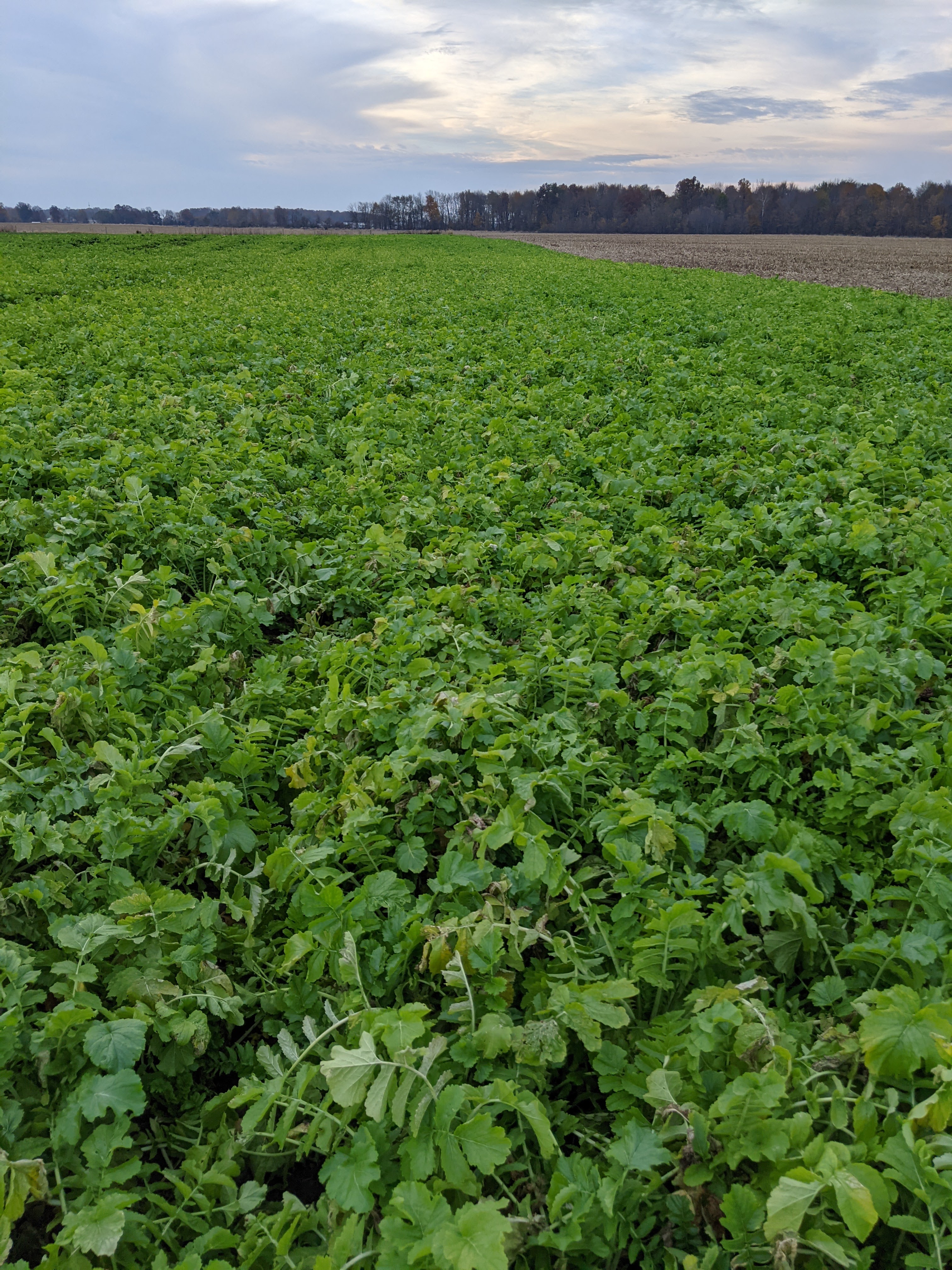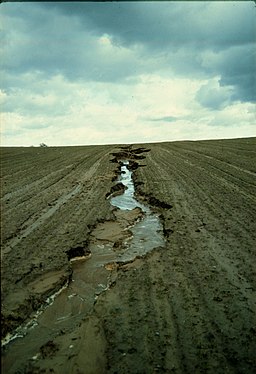
Why Cover Crops Don't Belong in Indoor Gardens
I’d like to start by saying cover crops are amazing and have a ton of benefits. They are one of the best ways to improve soil health in agricultural soils. Cover crops can be used to increase organic matter, effectively raising cation exchange capacity in soils where it’s impractical to bring in compost or mulches. Certain cover crops like radishes help with compacted soil by breaking through tough layers of subsoil, making it easier for your main crop to increase it’s rooting depth. Having a cover crop protects the soil from erosion due to wind or heavy rains, and also reduces water evaporation by keeping soil moisture levels more consistent. They also have the ability to add nutrients to the soil, like fixing atmospheric nitrogen through their relationship with N-fixing bacteria. And let’s not forget that cover crops promote soil biology, which is key to creating and maintaining healthy soils.
Erosion in an agricultural field in Eastern Germany
With this myriad of benefits, it seems like common sense that we would want to use cover crops indoors as well. However, in my experience, cover crops do not offer practical value in many indoor or greenhouse gardens and the risks far outweigh any of the benefits we might see in our soil or main crop.
First of all, cover crops is not even the correct terminology for what most growers are doing. In agriculture, cover crops are used to cover the soil when your cash crops are not being grown. Most growers are using cover crops plants concurrently with their main crop, which is totally different. We should be calling this companion planting, not cover cropping. Growing indoors vs growing outdoors requires entirely different methods and procedures, and too often growers try to incorporate agricultural practices in ways that may be suboptimal.

A cover crop of tillage radish in early November
The biggest reason to avoid cover crops indoors is because they can be habitat for pests and pathogens. While certain cover crops can function as banker plants or trap plants, it’s best practice in greenhouses to run those plants in their own containers. In outdoor environments we have a variety of natural predators and much greater diversity of insect populations that help keep the random thrip or spider mite in check. In controlled environment agriculture, we lack that natural diversity and protection, and a pest can rapidly get out of control, causing massive crop damage and economic losses.
On a commercial scale, adding cover crops increases your labor cost and facility management. Cover crops add the cost of seed, the labor of sowing the seed, additional watering, maintenance, scouting, and potentially pruning and trimming so as not to outcompete your main crop. For a small home gardener or tent grower, this is probably not an issue, but it’s something to take into consideration.
Cover crops make fertility targets more challenging. For those of us that are soil testing and working to optimize soil fertility, knowing the release rates of nutrients is crucial to maintaining balance and sufficiency. In my experience, cover crops can oversupply some nutrients like N for example, while leaving deficits in other important nutrients like phosphorus. It’s an added variable that makes an already challenging process more difficult.
Cover crops can compete with our main crop for nutrients and resources. When timing is off on sowing, cover crops can shade out your main crop or pull more nutrients into their biomass, leaving your main crop stunted or stressed, making it more susceptible to disease and pests.
Re-amending soils becomes much more difficult with a cover crop in place. When re-amending, I believe it’s important to lightly mix the nutrients (dry amendments) into the first 6”-8” of the soil. If you want to read more about the “why,” you can check out this blog post here. This allows nutrients to be in the rhizosphere and more available to the plants when we are doing intensive cropping and have only 24-36 hours of down time between flower cycles. When you have a cover crop, you cannot really mix the soil and would need to wait for the cover crop biomass to break down somewhat before planting if you did want to lightly till the soil.
Cover crops can make environmental controls more challenging. While this may be a somewhat minor point, adding more plant biomass in a room will potentially increase transpiration and respiration rates, and possibly require more energy in the form of environmental controls like dehumidification.
I realize that some growers will still choose to utilize cover crops indoors and I have seen some successful use cases on social media that appear to show healthy plants. However when weighing out the pros and cons and optimizing processes in our garden, I don’t believe cover crops belong indoors. Of course in a small tent garden, where scouting and plant management is quite simple, this is much less of an issue. When we move into the commercial realm with hundreds or thousands of plants, the added labor and associated pest risk far outweigh any benefits a cover crop may offer.





